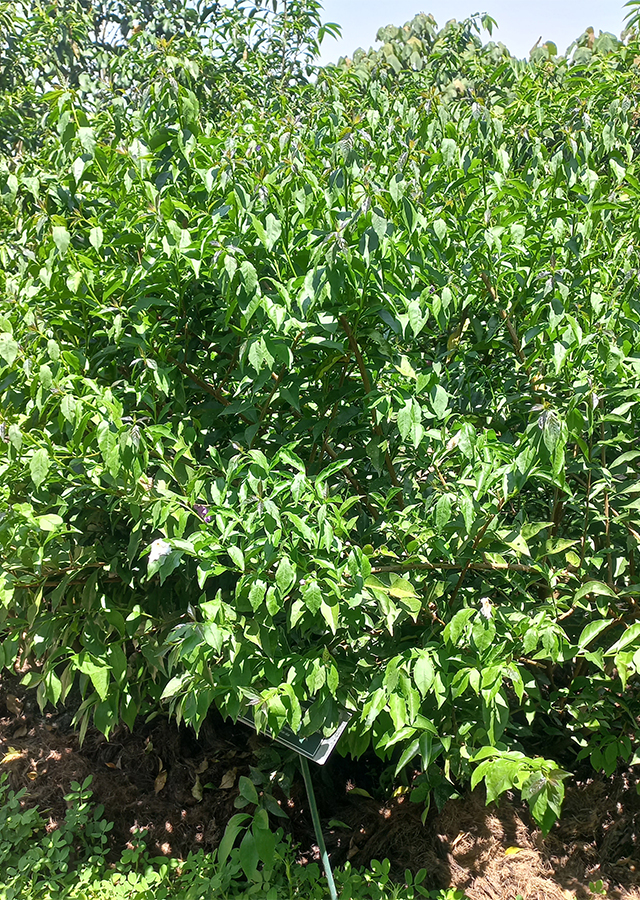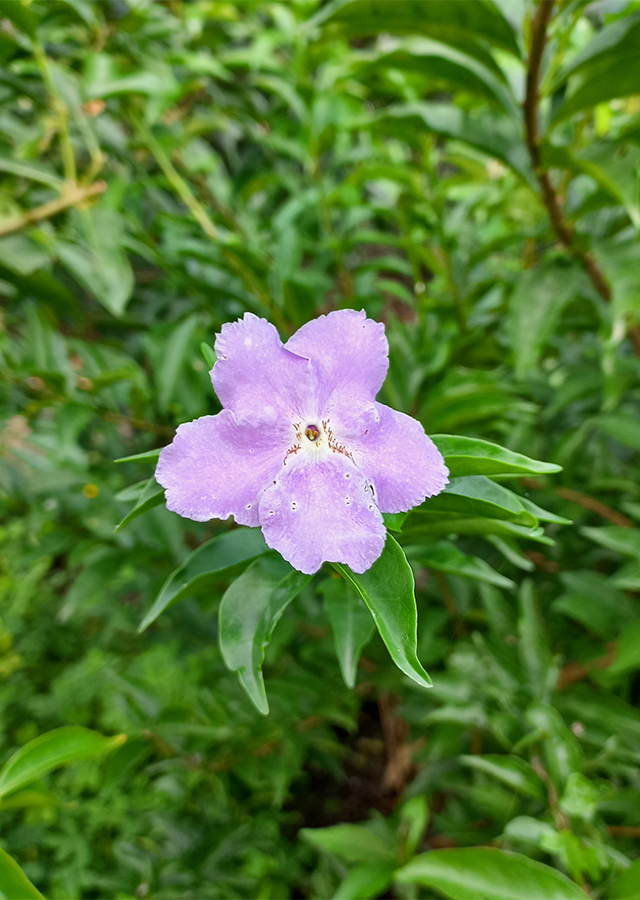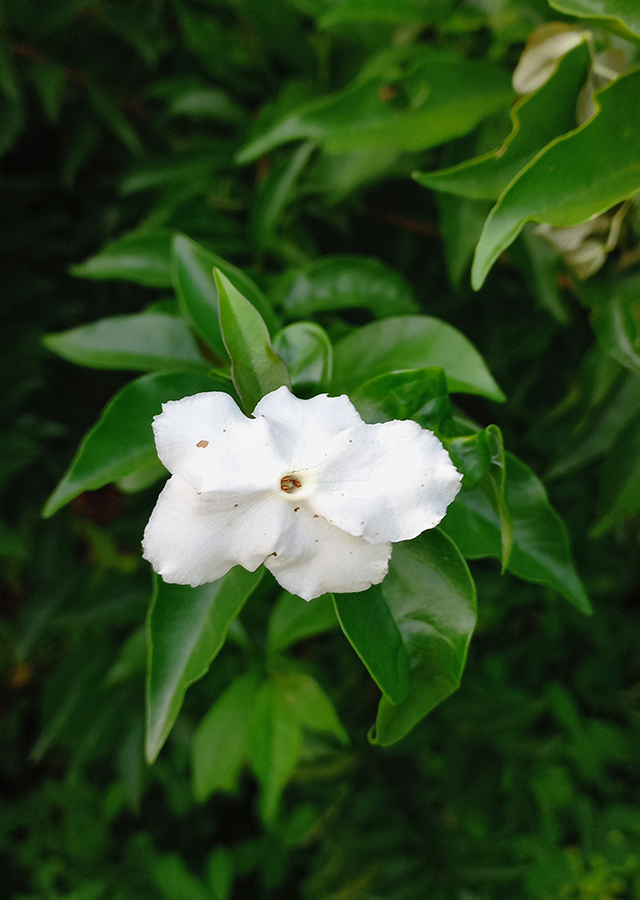Yesterday, Today and Tomorrow Plant
Brunfelsia pauciflora (Cham. & Schltdl.) Benth.
Solanaceae
Location in our garden
Principal



Synonym
Besleria inodora Vell.
Brunfelsia augusta Gentil
Brunfelsia calycina Benth.
Habitus
Shrubs. An evergreen perennial shrub, up to 3 m tall and spread 2 m wide, but usually 1.5 m tall and 1 m wide
Part Used
Flowers
Growing Requirements
Full Sunshine
Need Shade
Habitat
Riverbanks
Forest
Terrestrial
Overview
Brunfelsia pauciflora is native to Brazil. Genus name Brunfelsia is derived from 16th century German monk, Otto Brunfels, who was referred to as the ‘Father of Botany’ because of his significant research contribution to botany. Species pauciflora means few-flowered. It gets its name "Yesterday, Today and Tomorrow Plant" from the ever-changing color of its blooms that go from deep purple to lavender, to white as they mature. It is has environmental uses and as a medicine. It is desirable for its ornamental and fragrant flowers.
Vernacular Names
No found data on this. Need further research.
Agroecology
Prefers acidic soil with a pH balance just below the neutral 7, so mulch with pine-needles, moss or acidic compost around their bases. Light shade is the best, although full sun is tolerated.
Morphology
- Stem - the bark is greyish brown, smooth dark green branches.
- Leaves - simple, 8-16 cm long and 2-6.5 cm wide, leathery green leaves are elongated lanceolate with a pointed tip and a wedge-shaped base. Undersides lighter greenalternate. pinnate venation, entire - wavy/undulate margin.
- Flowers - 5 cm flowers are borne in terminal clusters of up to 10, free flowering, blooms in purple, gradually turns blue or mauve and finally white with aging. Bisexual flowers, 5 - petaled, overlapping, white center, fragrant.
- Fruits - berries, green capsule, brown when mature, contains many seeds.
- Seeds - 5-6 mm long and 2.5-3 mm in diameter, oval-elongated shape, oblique and dark red-brown in colour. Its surface is dotted like a net.
Cultivation
- Generative propagation is by seed.
- Vegetative propagation is by softwood cuttings.
Chemical Constituents
Sesquiterpenoids (γ-muurolene and α-copaene), alkaloids, alkaloid manacine, manaceine, aesculetine, scopoletin non-nitrogen (6-methoxy-7-hydroxycoumarin).
Traditional Medicinal Uses
No found data on this. Need further research.
Part Used
Reference Sources
- Bertrand, C., Comte, G., and Piola, F. (2021). Solid-phase microextraction of volatile compounds from flowers of two Brunfelsia species. Biochemical Systematics and Ecology (ISSN : 0305-1978). https://hal.archives-ouvertes.fr/hal-00124548. 01-07-2022.
- Kew Royal Botanic Gardens. (No date). Plants of the World Online: Brunfelsia pauciflora (Cham. & Schltdl.) Benth. http://www.plantsoftheworldonline.org/taxon/urn:lsid:ipni.org:names:814676-1. 01-07-2022.
- National Park of Singapore. (2021). Flora & Fauna Web: Brunfelsia pauciflora.(Cham. & Schltdl.) Benth. https://www.nparks.gov.sg/florafaunaweb/flora/1/7/1733. 01-07-2022.
- North Carolina State Extension. (No date). North Carolina Extension Gardener Plant Toolbox: Brunfelsia pauciflora. https://plants.ces.ncsu.edu/plants/brunfelsia-pauciflora/#poison. 01-07-2022.
